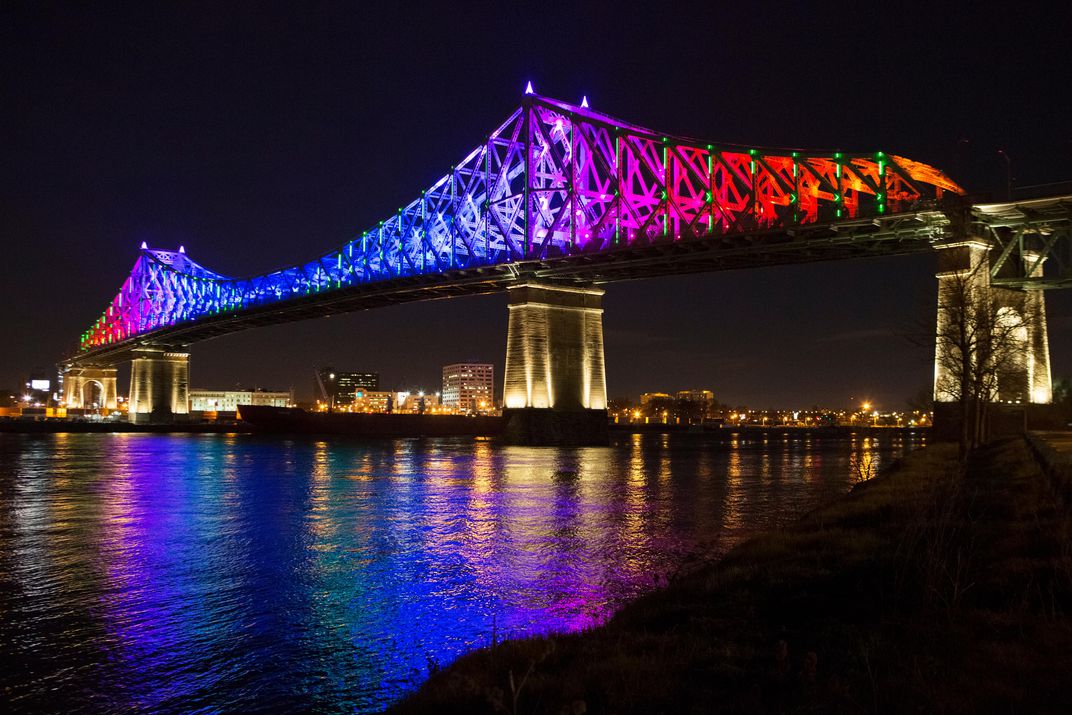For Montreal’s 375th birthday this year, the city introduced a new feature: a large-scale light show on the Jacques Cartier Bridge. But it’s no normal light display. This one interacts with both ever-changing city data and the pulse of Montreal on social media, as hashtagged by residents and visitors. The project, called Living Connections and created by Moment Factory in collaboration with six other Montreal multimedia and lighting studios, makes it the world’s first networked bridge.
“Since 1930 when the Jacques Cartier Bridge first connected people on the island of Montreal to the rest of the world, Montrealers have dreamed of finding a meaningful and beautiful way of lighting this colossal marvel of engineering,” Gabriel Pontbriand, Creative Director and Head Lighting Designer at Moment Factory, told Smithsonian.com. “Today, really for the first time in the history of cities, we can use the dynamic properties of light to offer locals and visitors ways to engage with and influence the appearance of the skyline that surrounds them.”
The bridge “wakes up” every evening at sunset, when colored lights begin to sparkle on the interior struts of the bridge. The color of the lights are designed to match a color that cameras on the bridge find in the sky, so it appears that the bridge itself is melding with the sky above—until dusk, when the sky is dark enough to allow the bridge to fully illuminate. At that point, there’s a four-minute color show, ending in a specific feature color chosen for that day. Every day has a different color from a palette of 365 that corresponds to the season, so no day throughout a single year will have a repeat color. A special show at midnight cycles through all 365 available colors and selects the next for the following day.
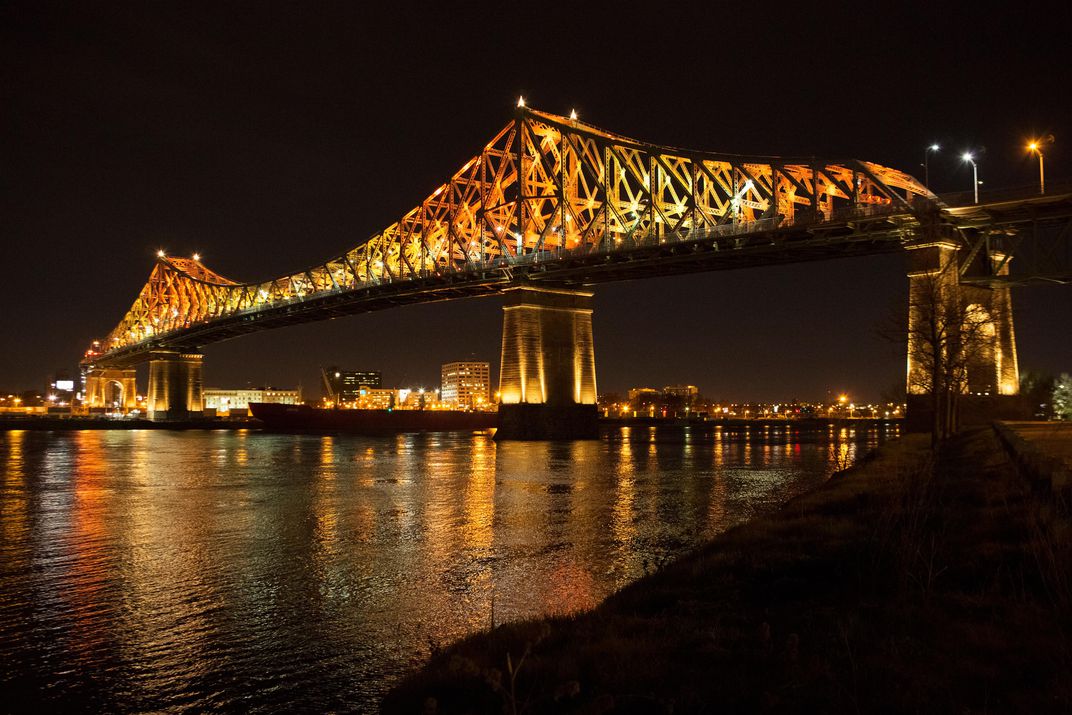
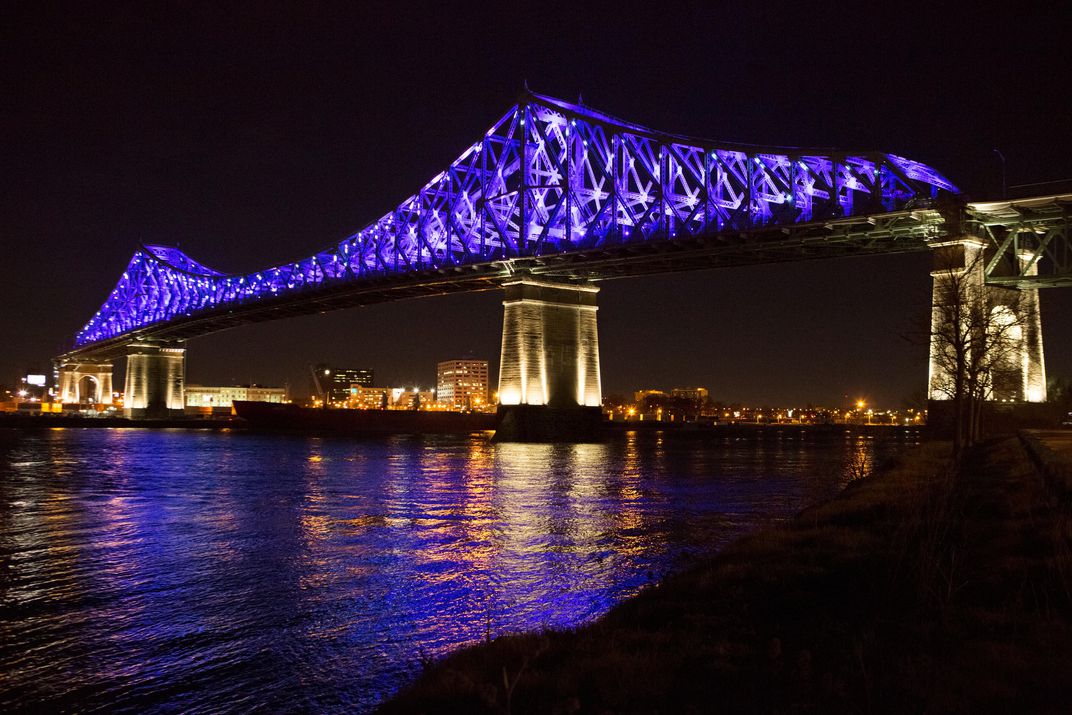

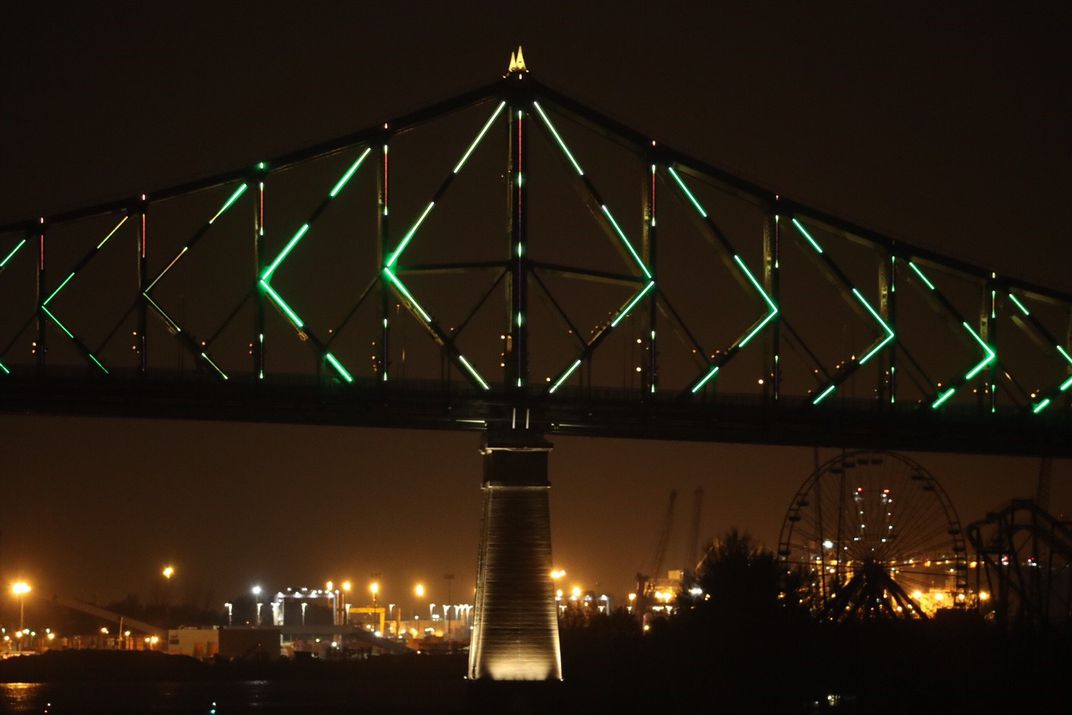
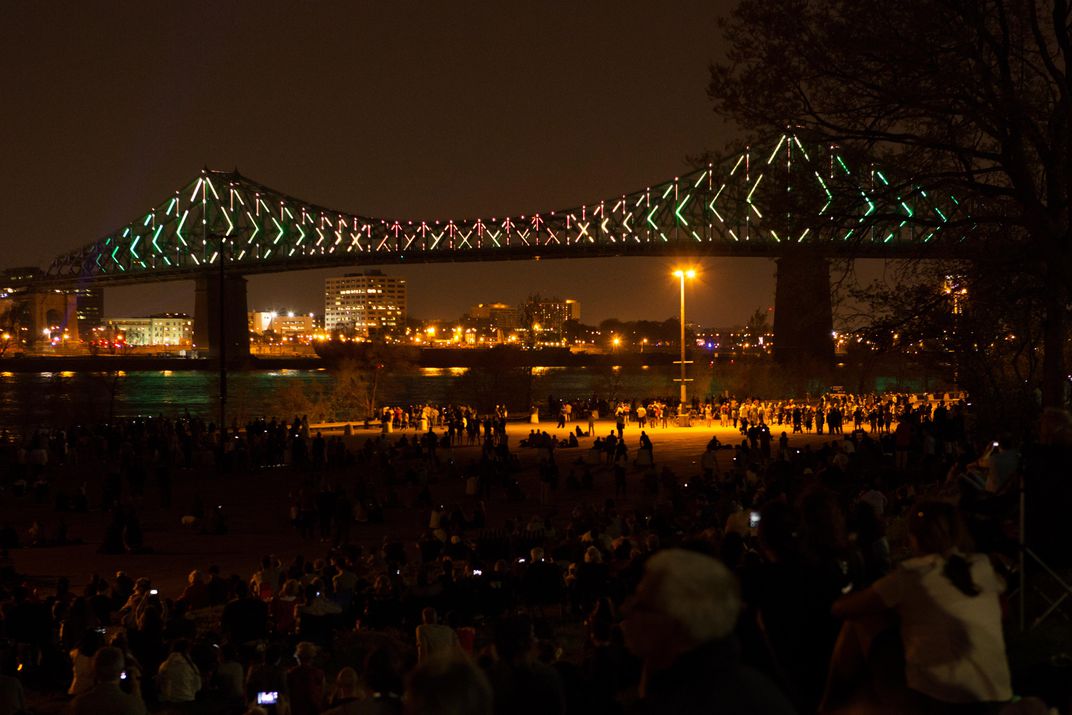
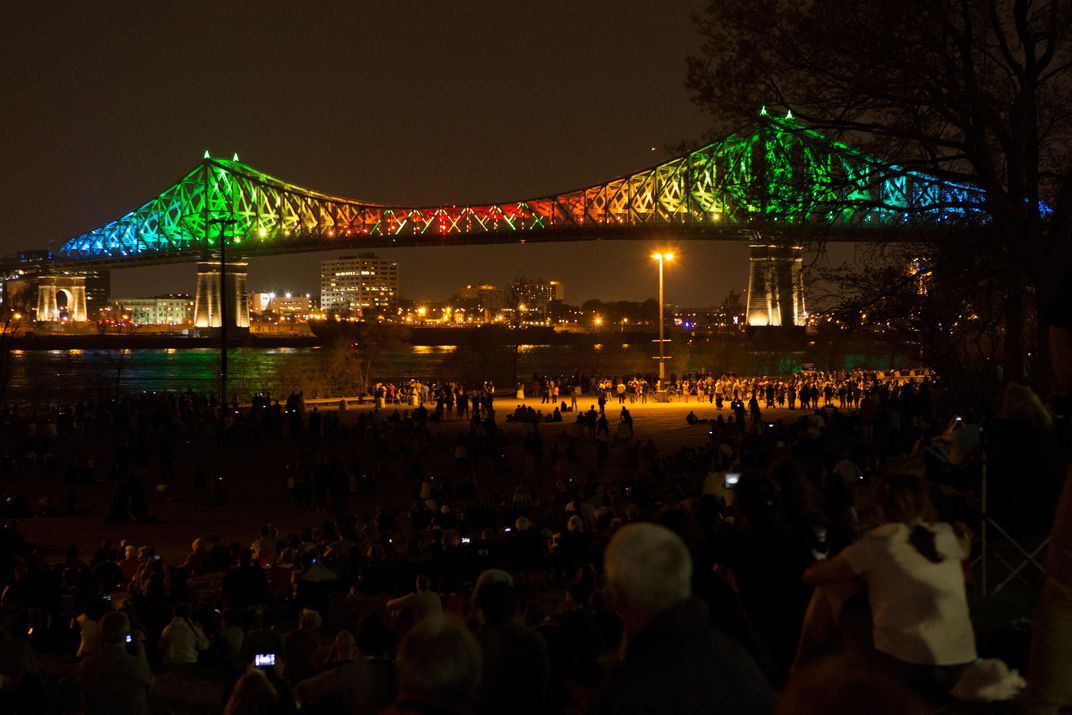
Throughout the night, from dusk to 3 a.m., the bridge alternates between two displays. First, every hour, on the hour, there’s a color show on the exterior of the bridge that reflects the day in Montreal. It’s data-based—algorithms collect information about the day’s weather, traffic, social media mentions and news, and translate all that into a unique show. The hues represent the overall “mood” of the city. So say it was hot, traffic was bad, people complained on Twitter, and articles about Montreal covered a death, the colors might appear more angry or harsh. If everything was cheerful throughout the day, bright and happy colors might appear on the bridge. The hourly shows are updated in real time, taking into consideration all data up to the time that particular display is on.
Between those hourly shows, the bridge has a special feature that allows social media users to interact with the lights. Anytime someone tweets using a select group of hashtags (#illuminationmtl, #375mtl, #MONTRÉAL, #MONTREAL, #MTL or #mtlmoments), a point of light appears atop one of the two towers on the bridge. The light then flows down onto the surface of the bridge, getting faster and growing longer based on the amount of people liking and retweeting the post. And it works in real-time—someone could stand by the bridge, tweet with a hashtag, and watch their point of light appear and begin its journey almost instantly.
“Our Living Connections project not only celebrates the remarkable design of the bridge, revealing it for the first time on the nighttime skyline of the city, but it also mirrors the energy of the city itself, from its seasons and its citizens, Pontbriand said. “Montrealers have always been recognized for their creativity and innovation, and this bridge illumination is a way for us to share this part of our identity with each other and with the rest of the world.”
At 3 a.m., the bridge begins to fall asleep with the city. The light shows stop, the social media interaction dims, and everything eventually fades to just a low illumination of the two bridge towers. Just before dawn, it wakes once again, taking color from the sky and twinkling that hue across the bridge, before fading out for the remainder of the daylight. This cycle will continue every night for the next ten years.
